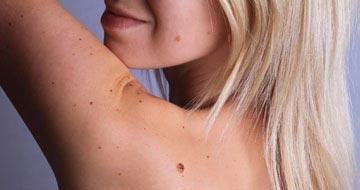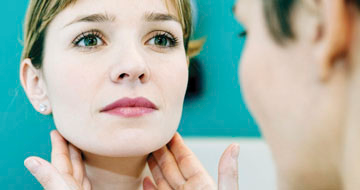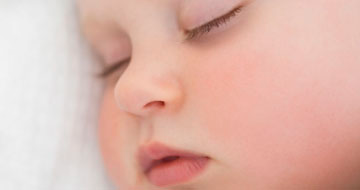Congenital Conditions Screened for in Pregnancy
The vast majority of babies are born without congenital conditions, but, unfortunately, there is always a small risk of abnormal development.
Most instances of these are minor, but a very small number of babies have major abnormalities. We take a closer look here at the nature of what these might be and the best way to screen for them during pregnancy.
What are congenital abnormalities?
Congenital abnormalities - also referred to commonly as ‘birth defects’ - are those that babies are born with. They are most commonly the result of random abnormal development but can sometimes be inherited.
Fortunately 98% of all pregnancies are fine, but there is a 2% chance of a baby being born with a birth defect. Among these, major abnormalities are rare, but they can include structural defects, typically of the heart or other organs, or chromosomal abnormalities, like Down’s syndrome. Luckily, we can test for both these types of congenital abnormalities.
What are chromosomal abnormalities?
Chromosomes are the "blue prints", or "DNA", that make us what we are. Humans have 23 pairs of chromosomes, or 46 in total. A minority of birth defects are caused by chromosome abnormalities and while some of the physical defects may be treated after birth, the underlying chromosomal abnormality will always be present.
Chromosome abnormalities affect the number of chromosomes so there may be too many (the usual case) or too few.

Down’s Syndrome: This is a condition in which the foetus develops an extra chromosome or an extra piece of a chromosome. This extra copy changes how a baby's body and brain develop and can lead to mental and physical challenges throughout their lifetime.
Chromosomes are present in nearly every cell of our bodies: therefore Down’s syndrome can affect any organ system and it can impact digestive, speech and other physical systems. Those affected also tend to face cognitive and intellectual issues - their severity varying according to the individual.
Edwards Syndrome and Patau Syndrome: In these chromosome abnormalities, the effect on organ function is so severe that the baby may not survive the pregnancy, or is most likely to die shortly after birth.
Trisomy 18 (Edwards syndrome) and Trisomy13 (Patau syndrome) are associated with a high rate of miscarriage. Babies with these conditions are typically affected by severe brain abnormalities and often have congenital heart defects as well as other birth defects.
What are structural birth defects?
Most structural birth defects are random abnormalities that can involve any organ system: for example, the brain, spine, face, heart, kidneys, extremities, lungs or gastrointestinal tract. These may be either major or minor.
In most cases, the cause of the defect is unknown and is not linked to an abnormality in the chromosomes: it simply reflects the complexity of development from a single cell to a fully functioning person.
A detailed foetal ultrasound scan, when performed by a skilled clinician, can detect the vast majority of major birth defects. For example, a high quality ultrasound can detect nearly all open spinal defects, so that a normal result virtually eliminates the possibility of a significant spinal condition.
While major anomalies involving other organ systems can also generally be identified, some minor defects may remain undetected.
How do you screen for major congenital abnormalities?
Screening for congenital abnormalities is a routine part of your pregnancy care, and ultrasound scanning alongside blood tests are a highly effective way of assessing the possibility of birth defects.

Two pregnancy ultrasound scans are used to detect the vast majority of serious birth defects:
- 12 week nuchal translucency pregnancy scan: This 'first trimester combined screen' is carried out between week 11 and 14, and can include a blood test for even greater accuracy.
- 20 week anatomy and anomaly pregnancy scan: This comprehensive 'second trimester scan' is carried out between 18 and 22 weeks.
What are Non-Invasive Prenatal Tests (NIPTs)?
Non-Invasive Prenatal Tests (NIPTs): If you are in a high risk category, in terms of family history or if you are over 35, or if you simply want a more accurate test, you may decide to have a non-invasive prenatal screening test, such as Illumina, MaterniT21 PLUS or MaterniT GENOME. These are advanced screening tests, not usually offered on the NHS, and offer a high degree of reassurance.
The range of chromosome abnormalities tested for varies from one NIPT to another, and has been increasing. It now includes a genome-wide test, MaterniT GENOME, which looks at all the chromosomes of your unborn baby. If you’d like to understand more about the differences between the various tests we offer, we have summarised them in the following chart.
The Medical Chambers Kensington is one of very few places in the UK currently offering a choice of 5 different tests to suit different needs.
What is an amniocentesis?
The most accurate test for a chromosomal condition such as Down's syndrome, Edwards' syndrome or Patau's syndrome is an amniocentesis. This test involves removing and testing a small sample of cells from amniotic fluid – the liquid that surrounds the baby in the womb.
However, it is an invasive test, and we only recommend it in the unlikely situation that a non-invasive test reveals a very significant risk, as the procedure itself carries a very small risk of miscarriage.
Make a private ultrasound appointment
If you would like to find out more about the different screening tests available or make an appointment for an ultrasound scan, please call 020 7244 4200, or email us at admin@themedicalchambers.com. You can also find a list of our fees and prices here.









